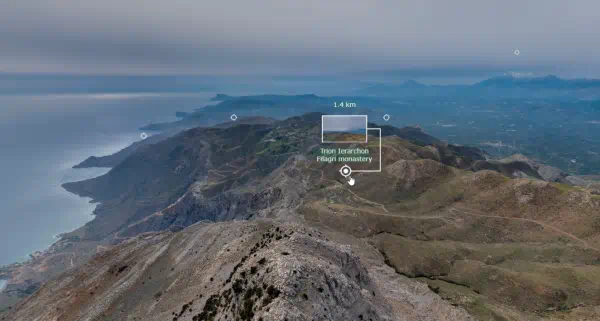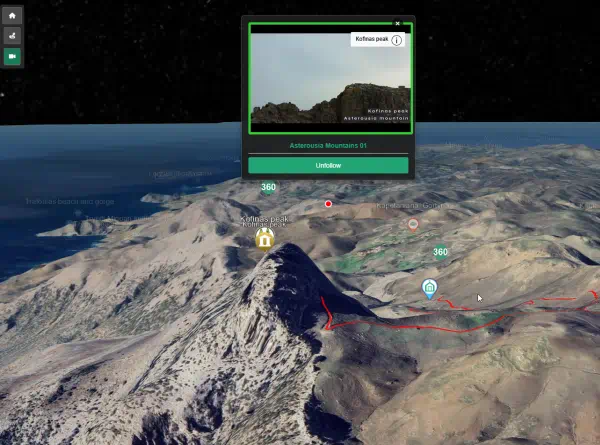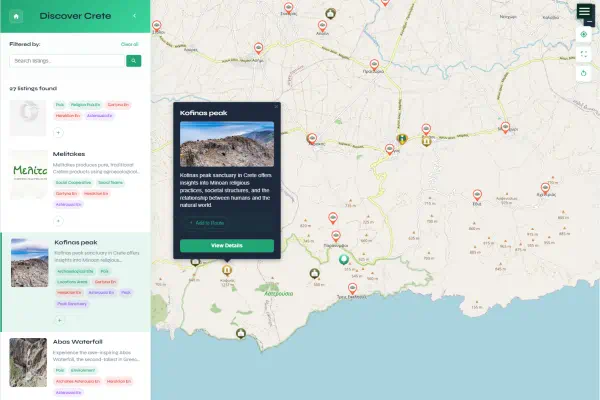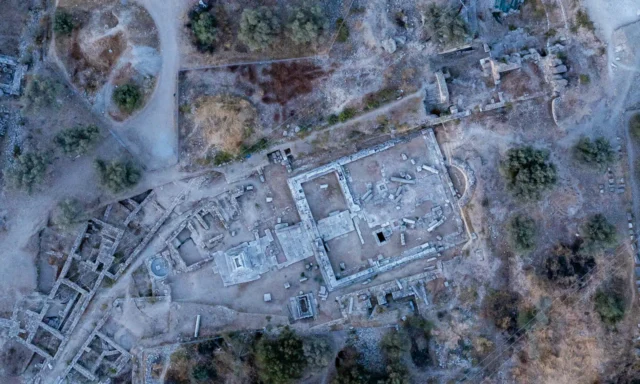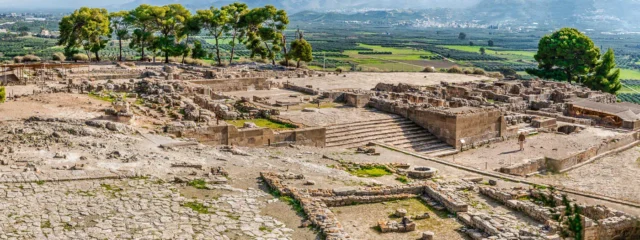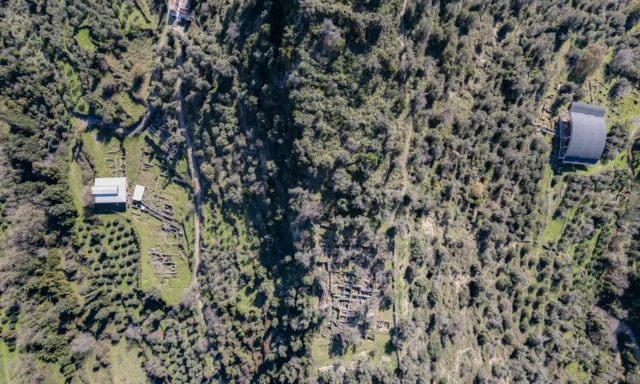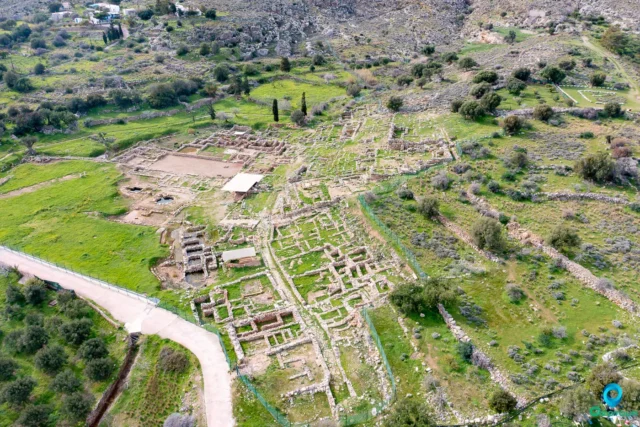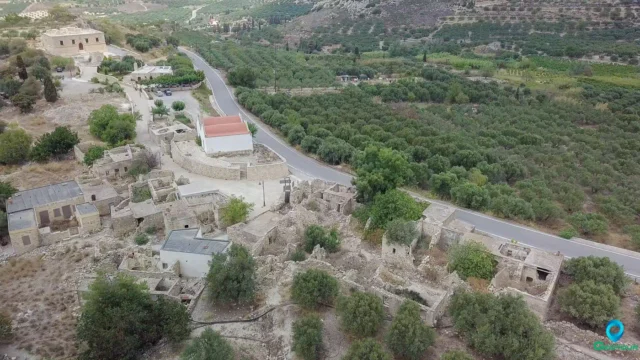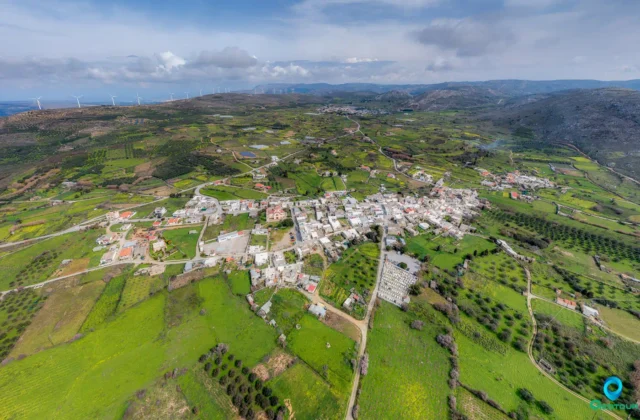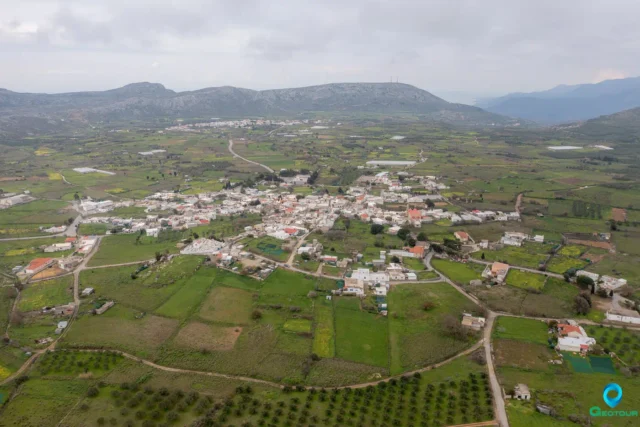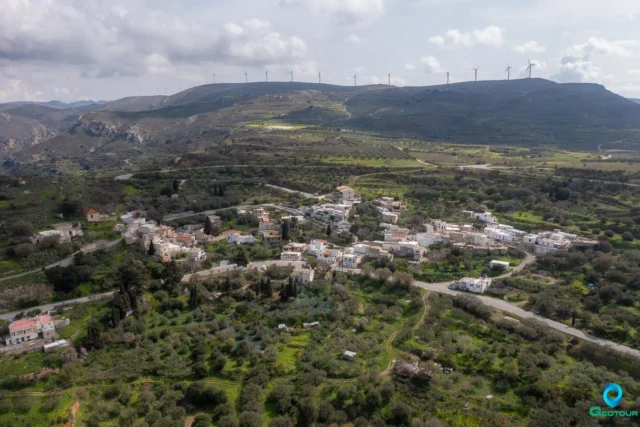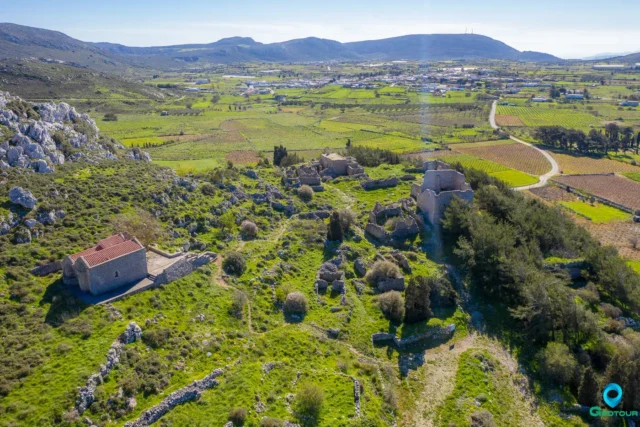Perivolakia (Περιβολάκια) is a village in Sitia, Lasithi, Crete, Greece. According to the 2011 census, it has a population of 21 residents. It is located at an altitude of 340 meters, 37 kilometers away from Sitia. The village consists of two settlements, Epano Perivolakia (Επάνω Περιβολάκια) and Kato Perivolakia (Κάτω Περιβολάκια). Epano Perivolakia is now uninhabited. Near Kato Perivolakia is the small village of Pezoulas (Πέζουλας).
History
In the cave of Vournoferto (Βουρνόφερτο), on Mount Kapparoukefala (Καππαρουκέφαλα), Paul Faure discovered hunting scenes. The drawings depict a goddess with dogs, surrounded by wild animals that have either been trapped in nets or hit by spears and arrows. Paul Faure dated them to the pre-Minoan era.
Perivolakia is not mentioned in the Venetian censuses. The oldest reference to it is in the 1881 census, when it belonged to the municipality of Chantras (Χαντράς) and had a purely Christian population of 142 inhabitants. In the 1900 census, it belonged to the municipality of Praisos (Πραισού) and had 179 inhabitants. In the 1920 census, it was designated as the seat of the homonymous rural municipality. In 1925, Perivolakia was annexed to the community of Lithines (Λιθίνες), but in 1930 it was designated as the seat of the homonymous community, which belonged to the province of Sitia. Epano Perivolakia was recognized as an independent settlement in 1940. The community was maintained until the Kapodistrias program, when it was annexed to the municipality of1 Makry Gialos (Μακρύ Γυαλού). With the Kallikratis program in 2010, they were annexed to the municipality of Ierapetra (Ιεράπετρας), but the following year they were separated from the municipality and annexed to the municipality of Sitia.
Sights
The Perivolakia Gorge (Φαράγγι Περβολακίων) or Kapsa Gorge (Φαράγγι Καψά) starts from the village. The gorge is about 4.5 kilometers long and is characterized by its steep walls with a lack of vegetation. The gorge ends at the beach near the Monastery of Kapsa (Μονή Καψά). The narrow endemic species Limonium cornarianum (Λιμόνιο του Κορνάρου) occurs within it.
In the area, one can also see:
- The deserted monastery of Panagia (Παναγία) in Kalo Nero (Καλό Νερό).
- The various caves in the area of Kalo Nero, the most popular being the Vorinos Spilios (Βορεινός Σπήλιος) next to the church of Panagia.
- The Monastery of Kapsa (Μονή Καψά)
- The old church of Agioi Saranta (Αγίοι Σαράντα) on the road to Goudoura (Γούδουρα)
- A series of beaches along the road Makry Gialos – Goudoura, with Ammoudi (Αμμούδι) being one of the most picturesque.
- The deserted traditional settlement of Pezoulas (Πέζουλας) with exceptional architectural elements.
Settlement: Key Points:
- Historical References: Perivolakia is not mentioned in Venetian censuses. The oldest reference to it is in the 1881 census.
- Location: Perivolakia is located in Sitia, Lasithi, Crete, Greece.
- Historical Significance: The village was designated as the seat of the homonymous rural municipality in 1920.
- Population Data:
Year |
Population |
Notes |
|---|---|---|
1881 |
142 |
142 Christians, 0 Muslims |
1900 |
179 |
|
1920 |
242 |
|
1928 |
179 |
|
1940 |
183 |
|
1951 |
148 |
|
1961 |
139 |
|
1971 |
109 |
|
1981 |
72 |
|
1991 |
44 |
|
2001 |
30 |
|
2011 |
21 |
|
2021 |
22 |
- Current Status: Perivolakia is a village with a population of 21 residents in 2011.
References

